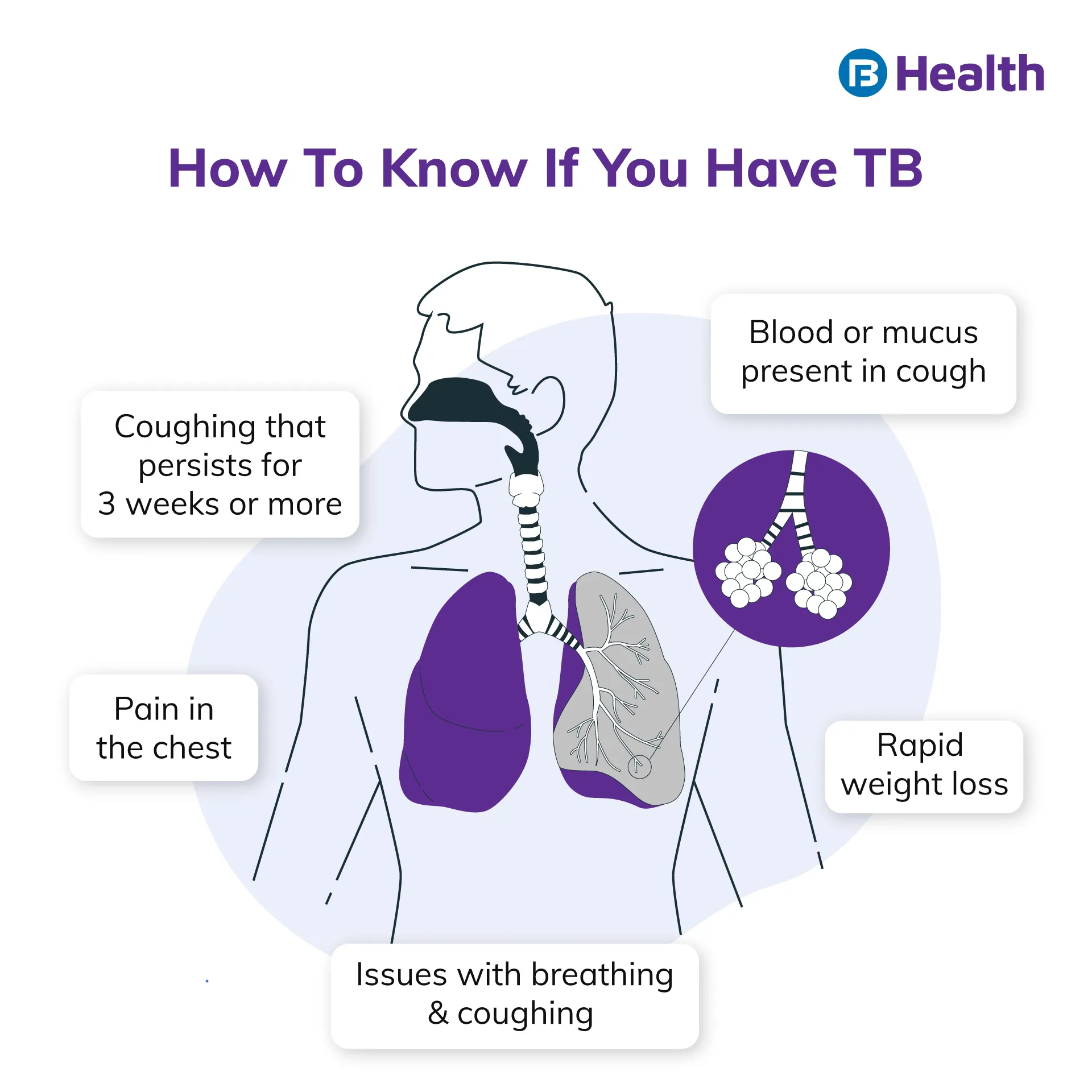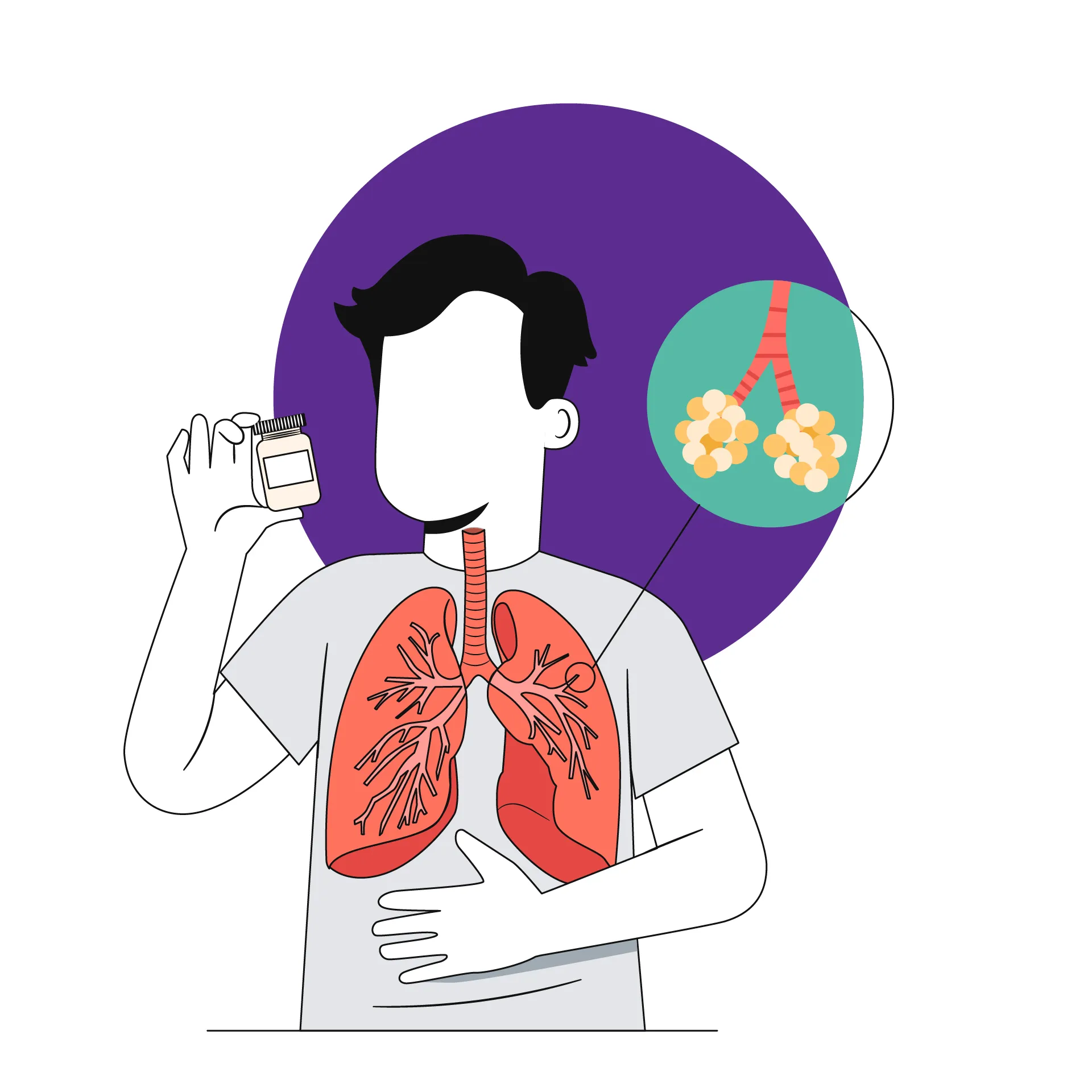General Health | 5 min read
World TB Day: Major Facts About TB Symptoms and Treatment
Medically reviewed by
Table of Content
Key Takeaways
- World TB Day is observed on March 24 every year to create awareness
- Tuberculosis disease symptoms include chest pain and persistent coughing
- Learn about what causes tb in humans, and its prevention and cure
World TB Day is an initiative started by the World Health Organization to create awareness of tuberculosis disease. Even though this disease kills many people every year, TB is a curable disease. It is important to be aware of this disease as tuberculosis bacteria can reside in your body undetected. March 24 was chosen as World TB Day as Dr. Robert Koch discovered the bacterium causing this disease, Mycobacterium tuberculosis, on this day [1]. To understand how deadly tuberculosis is and to learn about TB symptoms and treatment, read on.
Why is it important to celebrate World Tuberculosis Day?
- It is an astonishing fact that TB is the second infectious disease after COVID-19 [2]. Just like how kidney disease & COVID-19 are linked, so is the coinfection of COVID-19 and TB.
- Since TB is not given much importance, proper awareness about it can help individuals with high risk to seek proper treatment.
- With proper vaccination, this disease can be eradicated.
What is tuberculosis?
Tuberculosis mainly affects your lungs, but in some cases, it may also affect your brain, kidneys, and spine. It is a highly contagious disease as TB bacteria spread from one individual to another through droplets in the air. Being infected with the bacteria is not the same as having an active tuberculosis disease, as there are various factors to be taken into consideration. The three different stages of TB are [3]:
- Exposure to the bacterium
- The existence of the bacterium inside the body, but symptoms are not noticeable
- Active TB disease

Is tuberculosis contagious?
Now that you know what causes TB in humans, it is important to understand how it is contagious. Tuberculosis spreads when you have active TB disease. When you cough or sneeze, bacteria present in expelled droplets enter another individual when it is inhaled. Although TB spreads exactly like a cold or flu, it is not as contagious as flu or cold.
What are the symptoms of tuberculosis?
Sometimes, when the TB bacterium enters your body, you may not experience any signs of an infection. Called latent TB, this occurs when the organism is there in your body but is not noticeable. Latent TB is the one that stays passively in your body for years. If and when your body is unable to stop the growth of TB bacteria, it becomes an active disease.
Active TB has a range of noticeable symptoms, especially when it comes to respiration. However, they can be felt across the body, too, based on the locations of the infection.
Your lungs may showcase these signs of an active infection
- Pain in chest
- Presence of blood in the cough or sputum
- Continue coughing for over 2-3 weeks
Common signs of TB are
- Running a temperature
- Sweating at night or feeling chills
- Not having a regular appetite
- Feeling tired and weak
- Losing weight suddenly
Symptoms of TB that spreads to other organs
- TB in the kidney: hematuria or, in extreme cases, loss of kidney function
- TB damaging the brain: nausea, confusion, vomiting, or loss of consciousness
- TB affecting the spine: stiffness, back pain, muscle cramps or spasm
Is tuberculosis deadly?
Though tuberculosis is one of the world’s deadliest diseases, timely diagnosis and treatment can help cure the condition. You can also take measures to prevent the disease. Be regular with your health check-ups and keep a close watch on the symptoms.
How to know if you have TB?
If doctors suspect TB, they may recommend a TB skin test or TB blood test to reach a proper diagnosis. Take proper action and follow your doctor’s advice for faster recovery from the disease. Can you survive tuberculosis? Yes, there are good chances that you can survive TB with proper diagnostics and medications. However, if left untreated, TB can be fatal by first affecting your lungs and then spreading to other parts of your body.
Additional Read: Tuberculosis Test: Important COVID-19 Treatment Guidelines by the Centre!How can you treat tuberculosis disease?
Most bacterial infections improve after treatment with antibiotics, but TB is a little different. If you are diagnosed with active TB, you may need to be on a course of oral medicines for up to 40 weeks. This prevents chances of the infection recurring, so ensure you complete the full duration. This is the best way to ensure TB bacteria is killed, but again this period varies from person to person. It becomes difficult to treat you if TB reoccurs as you may develop resistance to the medicine. This is why timely treatment is key.
Most cases of TB can be treated if diagnosed at an early stage. If you observe any unusual symptoms, do consult a doctor without delay. Find pulmonologists with ease on Bajaj Finserv Health and get guidance about tuberculosis and how to take preventive measures. Book your online doctor consultation from your city, in the comfort of your home, and do your part to minimize the impact of this infectious disease.
References
- https://www.sciencedirect.com/science/article/pii/S1201971210023143
- https://www.who.int/news-room/fact-sheets/detail/tuberculosis
- https://openi.nlm.nih.gov/detailedresult?img=PMC3349743_ppat.1002607.g001&req=4
Disclaimer
Please note that this article is solely meant for informational purposes and Bajaj Finserv Health Limited (“BFHL”) does not shoulder any responsibility of the views/advice/information expressed/given by the writer/reviewer/originator. This article should not be considered as a substitute for any medical advice, diagnosis or treatment. Always consult with your trusted physician/qualified healthcare professional to evaluate your medical condition. The above article has been reviewed by a qualified doctor and BFHL is not responsible for any damages for any information or services provided by any third party.




